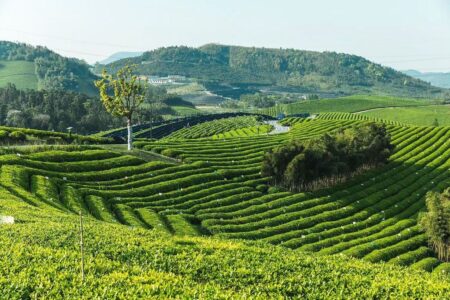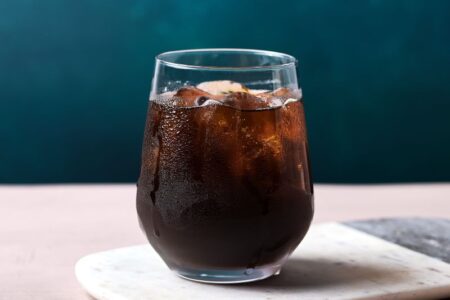Cafés up their game in China

Image courtesy of Euromonitor International
While coffee and teahouses are not new to mainland China or Hong Kong, those offering lifestyle experiences are, and consumers are embracing them.
Article by Peter Wong.
On Christmas Eve 2018, China’s hottest tea house, Heytea, opened its first outlet in Hong Kong, adding a new blood to the already-dynamic café industry in the city. Founded in 2012 in mainland China’s southern province Guangdong, Heytea is famous for both its cheese-inspired beverages and its Scandinavian minimalist design and is widely seen to be more like a Brooklyn (New York) coffee shop than a pure milk tea store. For anyone in town, it would be irresistible to have a fancy experience in drinking a freshly-brewed cheese bubble tea while soaking up the gentle ambiance at the store.
There is nothing new about coffee and tea shops being popular in both mainland China and Hong Kong. In fact, according to global market intelligence firm, Euromonitor International, the CAGR (Compounded Annual Growth Rate) value for specialist coffee and tea shops between 2013 and 2018 is 42 percent in Hong Kong and 173 percent in mainland China (see graphs on page 17). Coffee and tea houses are literally found on every single street in Hong Kong and top-tier cities in mainland China like Shanghai.
The New Lifestyle Cafés in Town
What is new is that the kind of coffee- and teahouses offering a lifestyle experience like Heytea is on the rise in both mainland China and Hong Kong.
More and more chains of coffee and tea shops are providing customers with an expanded product range such as all-day breakfast and beer to bring about a quality experience for them to enjoy life.
For instance, Starbucks Hong Kong established a flagship store at Lee Gardens in Causeway Bay in 2018, a prime location in the CBD area, with the idea of setting up ‘an urban retreat within the bustling city’ according to the global coffee giant. With a 5,500 square-foot store filled with branded housewares and merchandise and 50 new food and beverage items including gourmet toasts as well as coffee-inspired alcoholic drinks from the ‘Mixology Bar,’ the flagship store is an ideal spot for consumers to chill out and a ‘Third Place’ for customers to socialise with family and friends.

Nayuki’s Shanghai store features comfortable seating, premium teas and European bread. Image courtesy of Euromonitor International.
In mainland China, Nayuki, one of the key competitors to Heytea, has successfully attracted a huge number of consumers by its premium fresh-fruit tea and soft European bread. It also offers comfortable in-store sit-down zones with bright lighting for customers to relax in premium locations in cities. As a result, the brand has been able to establish itself as a major force in the industry.
Another observation is the emergence of new independent cafés operating under various fashion brands. Luxury fashion brands have launched name-sake cafés within their retail stores to actively offer shoppers ‘a diverse and an interactive experience’ as per the latest research report on Consumer Foodservice in Hong Kong from London-based Euromonitor. The collaboration has thus been instrumental in promoting the culture of lifestyle cafés in the metropolis.
For example, the world’s first Vivienne Westwood Café set foot in Shanghai in 2015. The café is the heavily filled with Vivienne Westwood Orb as well as the signature tartan elements, all being used in the design of tea sets and in-store decorations to allow customers to sense the punk element of the famous designer. In Hong Kong, Ralph Lauren located its first café in the Asia territory in 2018. Featuring Ralph’s signature green motif and ultra-high quality coffee and food sourced from prestigious manufacturers like Brooklyn’s Fine & Raw, Ralph’s Café offers consumers the joy of having coffee in a relaxing environment with a chilled vibe.
Therefore, the puzzle here is, how do these lifestyle cafés rise to prominence?
Consumer’s Passion for Innovation
Looking at the perspective of customers, it is not hard to conclude that consumers in the region are a big fan of novelty. Consumers in Hong Kong – 7.4 million Hong Kongers and 65.1 million visitors from the Chinese mainland every year – and in mainland China – 1.4 billion Chinese citizens – worship innovation as they would like to stay trendy and try new things as soon as they are available. This is part of the consumption culture in Asian mega-cities.
These lifestyle coffee and tea houses are new to consumers in mainland China and Hong Kong as most of the existing stores are traditional cafés focusing on coffee and tea per se, without blending products with lifestyle experiences. As a result, it is not surprising to always see long queues outside Heytea or ChaTraMue, which is another popular tea shop from Thailand recently established in Hong Kong thanks to the novelty of these new lifestyle cafés.

Source for charts: Euromonitor International

New Branding of Companies
There is also something in it for the outlets themselves. Through establishing these ‘lifestyle cafés,’ companies can build up and reshape the meaning and image of their brands to consumers.
‘My product is not only about a drink, but also about the environment and experiences,’ said Neo Nie, the founder of Heytea, adding that every brand culture needs a space to develop. By saying so, he implied a unique brand proposition has been created for Heytea’s success through a precise combination of products, environment and experiences.
Similarly, by stepping into the F&B sector with newly set-up cafés in town, luxury fashion companies can reshape their brands – ‘We are not just selling products but also experiences’ – and consequently stay profitable with a multi-dimensional business model.

Image courtesy of Wang Fangqing
Looking Ahead
‘We are confident that as long as we hit it big in China, we will certainly hit it big in the international market,’ said Nie. Since Heytea’s arrival, there are already six stores in Hong Kong. Heytea has become a big name and a timely witness of the vibrancy of lifestyle cafés in town. It is more than likely that the aroma of ‘cappuccino,’ the new sexy fashion in town, will be flowing all over the place in the Chinese mainland and Hong Kong shortly.
Peter Wong is an analyst specialising in the drinks and tobacco industries at Euromonitor International’s Hong Kong office. In his current role, Peter is involved in analysing and delivering the strategic market trends and insights across the sectors through market sizing, forecasting and competitor landscaping. Prior to joining Euromonitor, he worked at a leading global market research company in Hong Kong and Taiwan, performing retail measurement, quantitative and qualitative marketing research mainly for clients in the FMCG/retail, real estate and automotive industries.



